Ground Floor Project: The winning designs and shortlisted proposals for the Crown Estate’s scheme revealed

The Crown Estate has announced the winners of its hotly contested 'Ground Floor Project', which will now see designer Lola Lely and architecture practice RCKa create bespoke artworks for the lobbies of two landmark buildings in London’s St James’s neighbourhood. The mystique of unrealised projects, however, can be just as tantalising (think Le Corbusier’s ambitious Ville Contemporaine), so here, we take an exclusive look at all of the proposals, including the shortlisted designs by Formafantasma, Simon Hasan, Philippe Malouin and Faye Toogood.
The West End's largest property developer, the Crown Estate, tapped into its formidable resources (fueled by a multi-billion pound portfolio it manages for London) to set up the Ground Floor Project, with support from the non-profit Architecture Foundation. The scheme's brief called on designers to pay homage to St James's rich craft-based heritage with a unique artwork that will be placed in the reception areas of 12 Charles II Street and 11 Waterloo Place.
A panel of judges – including Wallpaper* Editor-in-Chief Tony Chambers – ultimately awarded the 11 Waterloo Place commission to RCKa for its ‘Acoustitch’ installation. Made from high-density foam in a Technicolor array of hues, the acoustic board celebrates the area’s tradition of bespoke tailoring. Vietnamese-born, East London-based designer Lola Lely, meanwhile, delved into the archives of John Lobb Bootmaker, using its shoe patterns as a springboard for her winning proposal for Charles II Street. Entitled ‘The Cosmology of St James’s’, the hanging kinetic piece is composed of bespoke ‘satellites’ made from materials such as leather, glass and metal.
Faye Toogood’s entry paid tribute to Pomeroy’s sculptural triptych on the original façade of 12 Charles II Street, with an abstract still life installation crafted from security mesh and polished brass. London-based designer Simon Hasan, meanwhile, proposed a kinetic sculpture comprising scaled up and abstracted tools commonly used amongst the trades central to St James’s history, such as millinery and perfumery.
‘Track’ by Canadian designer Philippe Malouin aimed to reveal the core of 11 Waterloo Place and was ‘inspired by a meticulous photo essay of the building’s details’. Marble, sandstone, glass and steel shapes are suspended from tracks that move slowly throughout the day, overlapping each other.
Channeling St James’s storied history, Formafantasma devised a wall-mounted deconstructed clock installation. ‘From then on’ threads together brass and marble with perfume, barber's brushes, leather and leather-making tools collected in three shops of the area. The installation offered a uniquely multi-sensory experience amongst all the entries with the proposed addition of a fragrance from the perfumery Floris. A drop of the perfume would be released each hour of the day on a block of salt, visualising the passing of time.
Just Lola Lely and RCKa's works will come to fruition, but the sketches and renderings by the other shortlisted designers are artworks in their own right.
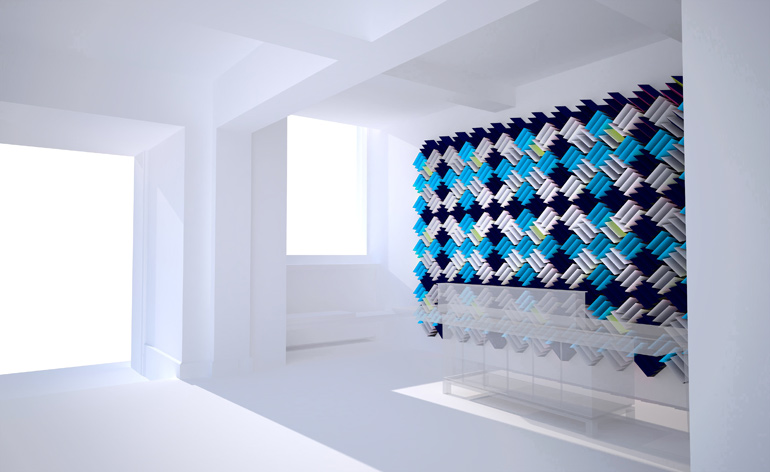
Made from high-density foam in a Technicolor array of hues, the acoustic board celebrates the area’s craft-based tradition of bespoke tailoring
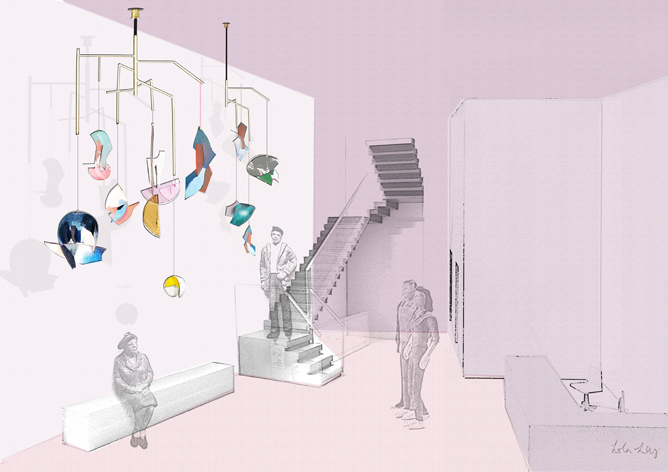
Vietnamese-born, East London-based designer Lola Lely scooped the contest's second commission. Entitled 'The Cosmology of St James’s’, the piece draws from the archives of John Lobb Bootmaker, using its shoe patterns as a springboard for her winning proposal for Charles II Street
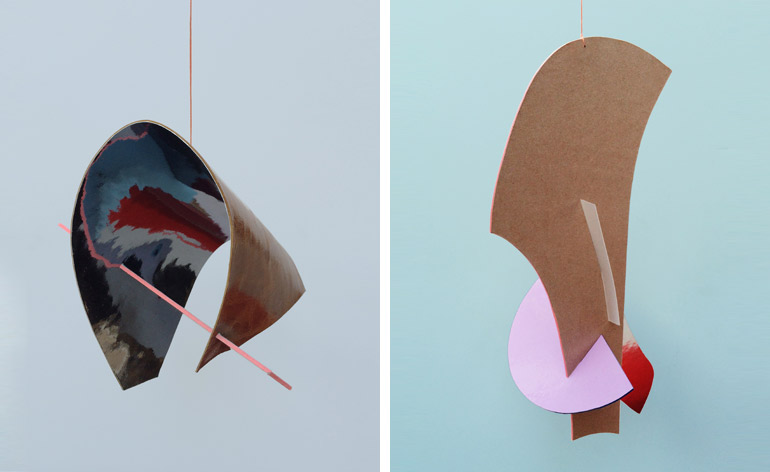
The hanging kinetic artwork is composed of bespoke ‘satellites’ made from tailoring patterns and materials such as leather, glass and metal
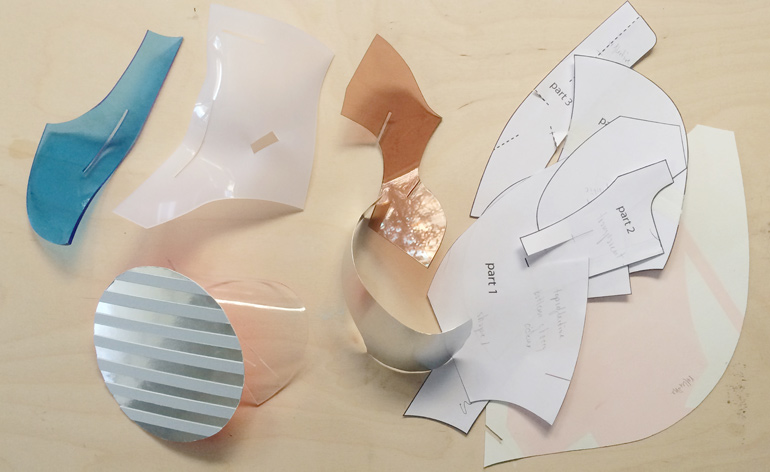
Material samples from Lely's sculptural mobile
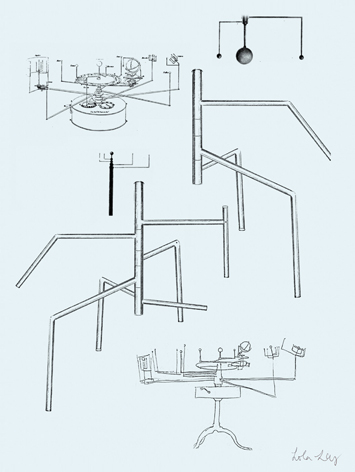
A working sketch of Lely's winning design illustrates its mechanics
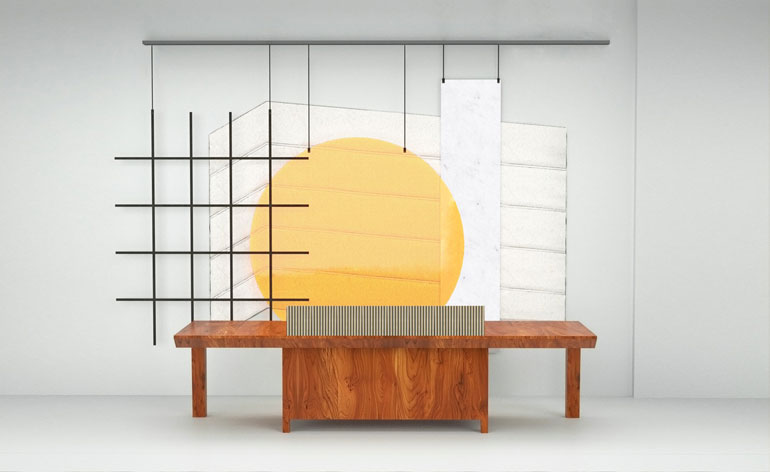
Philippe Malouin was one of six shortlisted designers in the Crown Estate's scheme. His proposed 'Track' installation comprises marble, sandstone, glass and steel shapes are suspended from tracks that move slowly throughout the day, overlapping each other
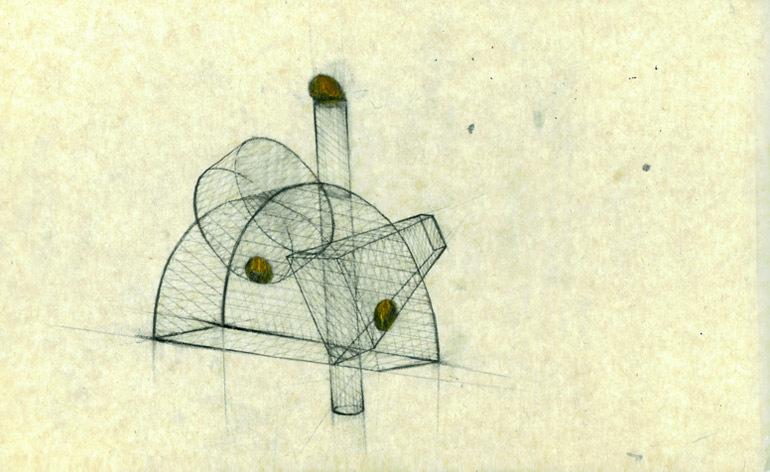
Faye Toogood’s entry paid tribute to Pomeroy’s sculptural triptych on the original façade of 12 Charles II Street, with an abstract still life installation crafted from security mesh and polished brass
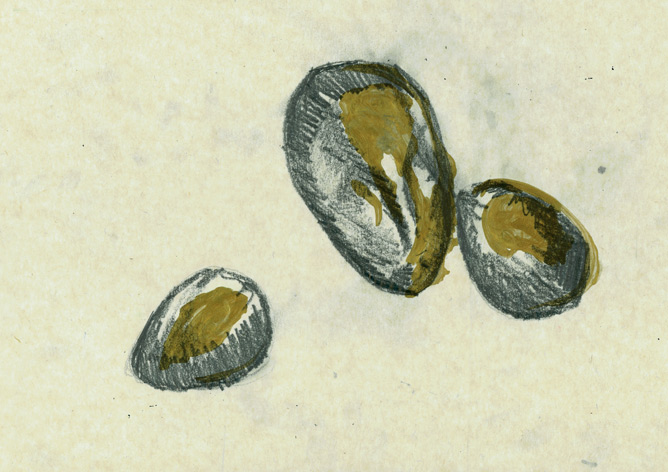
The main central head has a finely sculpted face, representing the main female figure on Pomeroy‘s façade sculpture. The two accompany heads are more abstracted sculptural pieces intended to give importance to the main figure
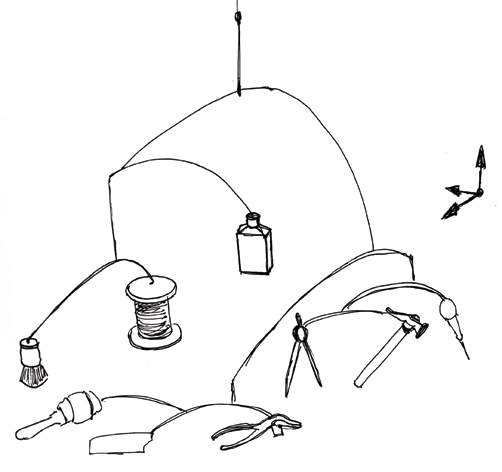
London-based designer Simon Hasan, meanwhile, proposed a kinetic sculpture comprising scaled up and abstracted tools commonly used amongst the trades central to St James’s history, such as millinery and perfumery
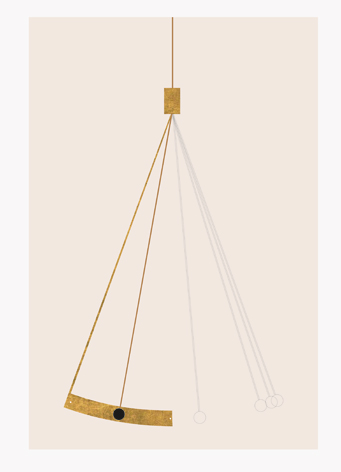
Design studio Formafantasma devised a wall-mounted deconstructed clock installation, named ‘From then on’

The installation threads together brass and marble with perfume, barber's brushes, leather and leather-making tools collected in three shops around St James's
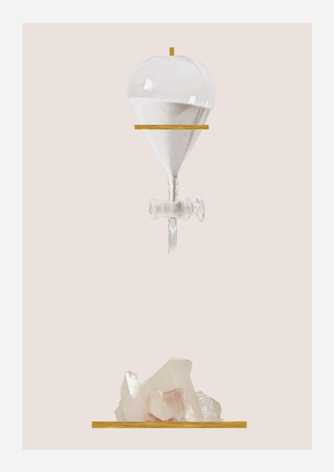
Formafantasma's proposal offered a uniquely multi-sensory experience amongst all the entries with the addition of a fragrance from the perfumery Floris. A drop of the perfume would be released each hour of the day on a block of salt, poetically visualising the passing of time
Receive our daily digest of inspiration, escapism and design stories from around the world direct to your inbox.
-
 A compact Scottish home is a 'sunny place,' nestled into its thriving orchard setting
A compact Scottish home is a 'sunny place,' nestled into its thriving orchard settingGrianan (Gaelic for 'sunny place') is a single-storey Scottish home by Cameron Webster Architects set in rural Stirlingshire
-
 7 colours that will define 2026, from rich gold to glacier blue
7 colours that will define 2026, from rich gold to glacier blueThese moody hues, versatile neutrals and vivid shades will shape the new year, according to trend forecasters
-
 In Norway, discover 1000 years of Queer expression in Islamic Art
In Norway, discover 1000 years of Queer expression in Islamic Art'Deviant Ornaments' at the National Museum of Norway examines the far-reaching history of Queer art